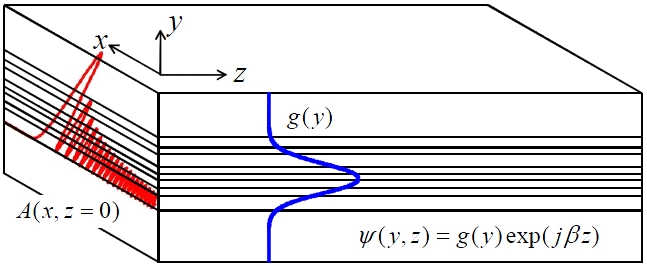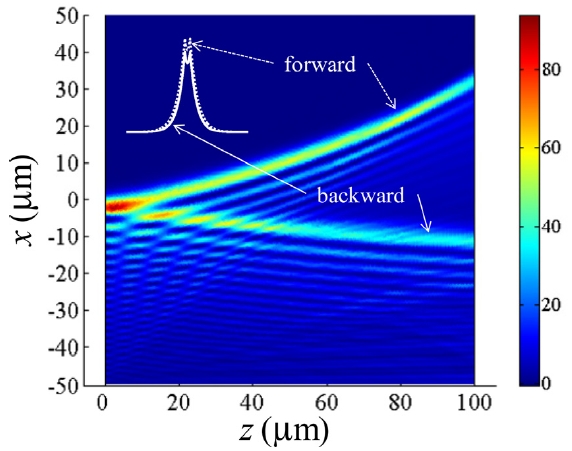



Here we report Airy beams coupled with waveguide modes. These waveguide Airy (WAiry) beams propagate through layered planar structures inheriting the characteristics of waveguide modes as well as those of Airy beams, such as diffraction-free and accelerating features. In particular, we focus on the WAiry beams associated with backward waveguide modes, showing that the backward feature can alter the trajectories of the WAiry beams significantly. Based on this, we propose a new scheme of waveguide-type polarization/power beam splitters.
Airy beams, optical versions of the original Airy wavepackets in the context of quantum mechanics [1], are one of several non-diffracting beam solutions whose intensity profiles remain invariant as they propagate through an optical medium. Compared with other types of diffraction-free solutions such as Bessel [2] and Mathieu [3] beams, Airy beams have several unique properties: they are the only non-diffracting solution in the most simple (1+ 1)D configuration and are
In this paper, we propose waveguide Airy (WAiry) beams: Airy beams propagating through inhomogeneous media with the help of waveguide modes. They not only retain the diffraction-free and self-bending properties of the Airy beam but also inherit the unique features of the waveguide mode such as polarization dependency and slow-light characteristics. Here, we will focus on the WAiry beam associated with the so-called
Let us consider a layered or stacked planar waveguide shown in Fig. 1. We have
where
in vacuum,
where
where
where we can find that α' is the exponential apodization parameter for the finite energy carried by the beam and α" is the phase modulation factor along the scaled transverse direction [15].
The above results imply that an Airy beam can propagate in any layered planar waveguides by forming a hybrid beam with waveguide modes. These Airy-like diffraction-free beams, hereafter called waveguide Airy beams or WAiry beams, inherit the characteristics of both the waveguide mode and the Airy beam. We note that WAiry beams are non-diffracting along all spatial directions: diffraction along the y direction is prohibited by the waveguide structure. Along the two other directions diffraction is prevented by the Airy beam profile.
III. BACKWARD MODE AND THE SPLITTING OF WAIRY BEAMS
The trajectory of the WAiry beam can be derived by setting the real argument of the Airy function in Eq. (3) to be zero:
where
We would like to propose two such cases in which the relevant two modes are forward and backward ones. In all cases, slab waveguides composed of
For the second case the waveguide supports dual modes. Dual modes have the same parity and the same number of zero-crossings, but their directions of overall power flow
are opposite to each other [14], meaning that dual modes include forward and backward modes. Therefore, the corresponding WAiry beam associated with each of them can also be separated. This characteristic, i.e., power beam splitting, is shown in Fig. 3 where we assumed TM-polarized light waves incident to a μ -negative/ε-negative/
We proposed WAiry beams: Airy-like beams associated with waveguide modes and propagating through planar waveguides. They not only retain the non-diffracting and accelerating properties of the Airy beam but also inherit the unique features of the waveguide mode such as backward powerflow characteristics. We showed that this additional feature of the backward power flow can be utilized to develop a new kind of polarization/power beam splitter.


